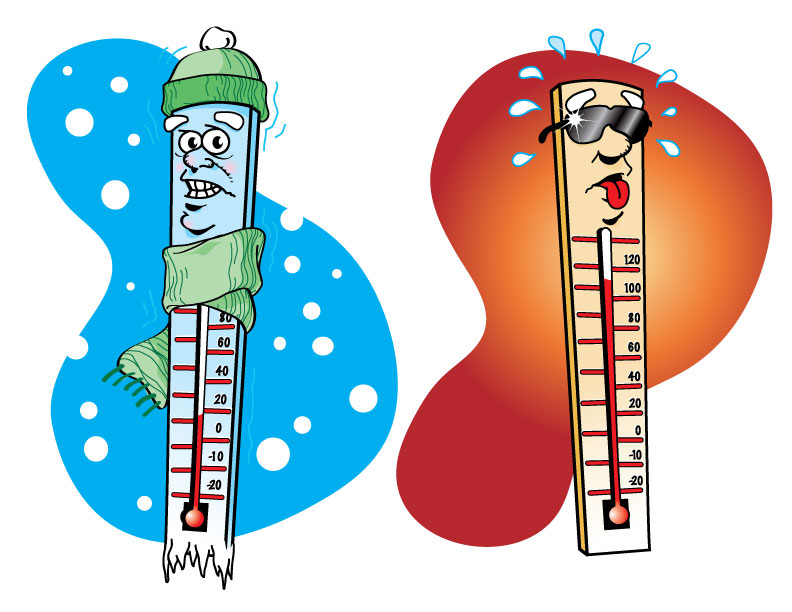RAISING AWARENESS: Unregulated Classroom Temperatures are Causing Strife and Suffering Among Jefferson Students
United in intellectual curiosity, divided in temperature sensitivity and sweat secretion.
October 5, 2016
Walking around the construction site that is Thomas Jefferson High School, I can grasp the issues causing most distress among students.
I see students sprinting from the Weyanoke trailers all the way to the new IBET wing, thumbs looped around their backpack straps, desperately trying to make the onerous trek across the campus before their next class begins.
“I guess I’ll just have to interrupt my learning next period to go to the bathroom,” I hear students sigh after peeking into the overcrowded restroom in the main hallway.
I watch seniors resign to eat their lunches on the floor while college representatives domineer their only senior privilege, the “S-lounge” in Franklin Commons.
But I believe that the gravest threat facing the Jefferson community today is far more insidious than these problems. Unseen by administrators, the unreliable temperatures of Jefferson classrooms are jeopardizing students’ educations and pinning students against each other.
“Every day I walk into Ms. [Mildred] Harris’s room and I am forced to put on layers upon layers of sweatshirts because it is too cold to maintain my body heat,” senior Tarun Singh said.
A student standing next to him maintained the opposite opinion about the same class, A.P. Government.
“I think it’s very hot in this building. Maybe it’s just me because I can’t handle my own hotness, but I think we could increase the air conditioning a little more,” senior Avinash Tummala said.
“Is this detrimental to your learning?” I probed.
“Yes, it is. I couldn’t take my Gov test because I was sweating.”
I experienced this issue myself today in Geosystems: as I fanned my face, feeling tangible heat, my friend sat shivering in her sweatshirt. Jefferson students can’t decide whether the building should be kept colder or warmer. How can we create a safe learning environment when students are concerned with their physiological needs?
Senior Omar Hatim mentioned that on red days, he has to bring a jacket around with him all day in case his seventh period class is cold while he is too hot to wear a sweater in his morning classes. He worries that his school performance is suffering as a result.
“I think that the fluctuation of temperatures in the different rooms is really detrimental to my education because I have to be focusing on my equilibrium temperature when I should be focusing on the lecture instead.”
But senior Jashan Matharoo thinks the cold indoor climate conditions that detriment his fellow students serve to better his day-to-day experience at school. Instead, he says, we should focus on prevention of sweat secretion during class.
“So I know the temperature can be quite cold at times, but I appreciate that it’s not too cold because I am a sweaty Indian child and sweat stains are really an issue. There needs to be more awareness about that. So I’m happy that they took steps to prevent that and made the building colder.”
Hatim hopes that Jefferson faculty and staff will ameliorate this issue by conforming to a single temperature setting.
“Teachers can help this situation by advocating for more regulations in cooling their rooms. There should be a set temperature throughout each and every class at TJ,” Hatim said.
I believe that if we were to attempt to choose one single temperature, though, we would never reach a consensus. Clearly, students disagree on which condition, hot or cold, would be less optimal for the intensive learning required of us at Jefferson. Should we prevent sweat stains or keep students comfortably warm? We may never agree.
Senior Gabi Gresenz has experienced this struggle as well.
“I wear the same sweatshirt every single day because I’m freezing and one day I forgot my sweatshirt and it was the worst day of my life and I was so distracted by the cold that I had trouble learning.”
She proposed a radical solution to this serious issue when I interviewed her.
“How do you think that teachers should fix this?” I asked Gresenz.
“I think they should use the thermostat.”







Ashley • Oct 6, 2016 at 12:59 am
LOL this is so funny!